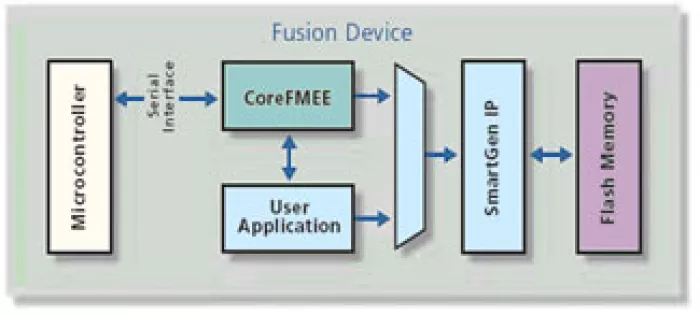Flash Memory Endurance Extender / EEPROM Emulation
Overview
The CoreFMEE (Flash Memory Endurance Extender) macro uses the internal Flash memory blocks of Microsemi Fusion™ devices to emulate a serial EEPROM and to extend the life of the memory. It typically exists in a Fusion system between a microcontroller core and Flash memory. The serial EEPROM emulation allows users to reduce board-level components and save valuable board area by using a highly integrated design approach (internal Flash memory and FPGA logic). CoreFMEE has write protection modes for the Flash memory that can be controlled either by hardware or by software. Multiple mapping schemes are allowed, from 1 to 128 physical pages per logic page. 128 physical pages per logic page will extend the memory 128 times the original life.
Key Features
- Support EEPROM Emulation and Flash Memory in the Same Application
- Support Flash Memory and Flash Memory with Endurance Extension in the Same Application
- Available EEPROM Configuration Sizes (in Bytes): 128, 256, 512, 1024, and 2048
- Configurable Endurance Size from 1 to 128 Pages in Power of 2 Increments (i.e., 1, 2, 4, ..., 128)
- Same 2-Wire Serial Interface as Atmel AT24CXX Devices
- Hardware and Software Write Protection Modes
- Page Mode Configuration
Block Diagram

Technical Specifications
Related IPs
- Complete memory system supporting any combinations of SDR SDRAM, DDR, DDR2, Mobile SDR, FCRAM, Flash, EEPROM, SRAM and NAND Flash, all in one IP core
- SPI XIP Flash Memory Controller IP – Programmable IO & Execute-In-Place (XIP) via second AMBA Interface
- NAND Flash Memory Model
- Parallel NOR Flash Memory Model
- Serial NOR Flash Memory Model
- SPI NAND Flash Memory Model